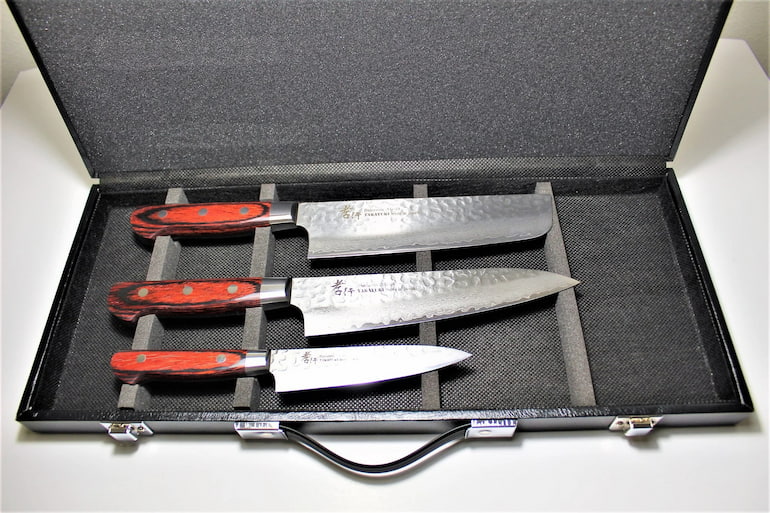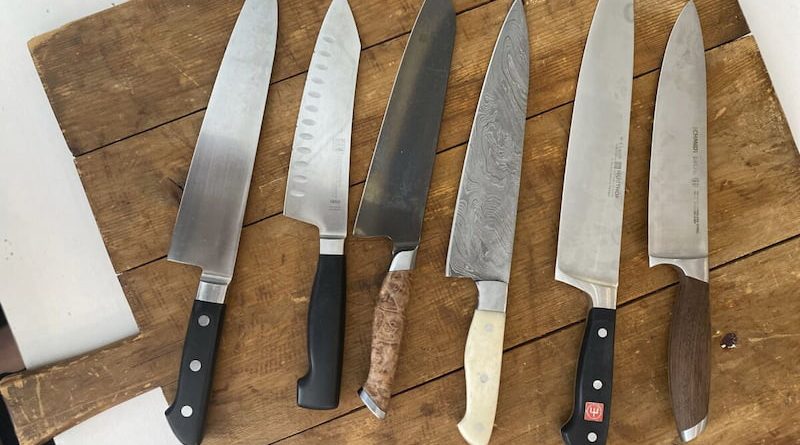How to Pick Japanese Chef Knives That Make the Cut
In the culinary world, there is an undeniable allure to Japanese chef knives. Being a blend of craftsmanship, precision, and performance, this kitchen tool has captured the hearts of professional chefs and home cooks alike.
Not only do these knives elevate your cooking experience, but they also provide unparalleled ease and control, making them a must-have addition to any kitchen. You will be surprised by the unique features the quality Japanese chefs knives on the market offer.
Curious to learn more about them? Here’s what you need to know to pick a knife that makes the cut
What Makes the Japanese Knife So Special?
Japanese knives have been in production for centuries. They are made of high-carbon steel and are handmade. This carbon steel is harder yet lightweight.
Some chefs knives are made from a combination of steel and soft iron. This allows the many layers needed for a Japanese knife to be made. Most models have a hardness ranging from HRC 58 – 65. A hardness of 60 is known as the best. The materials used for this knife are of better quality and don’t dull as quickly.
These tools are perfect for filleting a fish or slicing your vegetables, as they’re easy to balance. Your hand will not fatigue as easily as with a heavier knife. However, it’s important to be careful with them as they can be fragile due to their traditionally thin blades.
Most Japanese blades are sharpened to an angle of about 15 degrees whereas Western knives are formed at a 20-degree angle. This thin knife makes it easy to get the perfect slice. Your tomatoes will thank you later.

How to Pick the Right Knife?
What is your cooking style? Are you more of a fish, veggie or meat eater? Each technique of them requires a different knife. Let’s see the most popular types of Japanese chefs knives and their uses.
- Gyuto – This knife is best for many purposes such as slicing, dicing, and mincing. The Gyuto knife is typically between 210mm and 270mm in length.
- Deba – Also known as the heavy-duty blade. It’s usually used to clean and fillet whole fish. It can also be good to break down poultry with small bones. Typically the Deba is 150mm in length. Be mindful to pick a blade long enough so you can let the knife do the work.
- Yanagiba – This is best used to slice boneless fish fillets for sashimi and sushi dishes. The Yanagiba can also be used to fillet or skin small to medium-sized fish. It has a long blade that allows you to cut in one swift motion.
- Nakiri – Typically a rectangular shape, this knife is ideal for vegetables such as cabbage, potatoes, onions and peppers. It’s crucial for obtaining that perfect veggie slice.
- Takobiki – The Takobiki has a round pointed tip. As a long-slicing knife, it’s ideal for paper-thin cuts. You can use it to cut off the tentacles of an octopus or to thin-slice your fish.
Japanese knife handles can be made with a variety of materials such as wood, plastic, and metal. Keep in mind wood is certainly beautiful, but requires more maintenance.
Picking a new cooking tool is an investment since you’re going to use it for more than just kitchen decoration. That said, you must consider your needs and budget before you make a purchase. Remember, the quality of the material is essential in picking the best option.

How to Maintain Your Japanese Blades
High-carbon steel is durable but it must be properly maintained to prevent rust. Japanese chef knives are known for being thin and sharp. And to keep them that way, you must sharpen them regularly.
Sharpen the knife anytime you notice it’s dull. You can use a sharpening stone to do so. If it’s maintained and you’re using it often a medium coarse stone is ok.
Be sure to keep the blade and only clean it with mild detergent. To minimize damage to your blade, opt for wood-cutting boards and avoid hard stone ones.
FAQs
What Is the Best Japanese Chef Knife to Start With?
The Gyuto is a stellar starter option. You can slice veggies and meat with ease. This blade offers great versatility and introduces you to see to benefits of a Japanese knife.
How Much Does a Real Japanese Knife Cost
You can find a knife from around 50 AUD to 600 AUD. The price depends upon the materials used. There is much labour that goes into forging multiple layers to make just one blade.
What Is the Difference Between German and Japanese Knives?
German knives are thicker, more durable and are thought to be seen as more all-purpose chef knives. Japanese knives are lightweight and thinner, they are more precise in their cuts. Whether you pick Japanese or German they come down to personal preferences.

